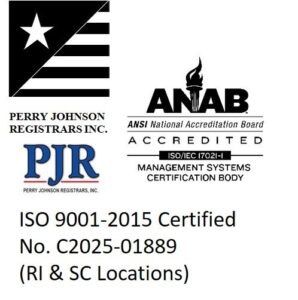Dye Class and Pigment Descriptions for Cotton, Rayon, & Cellulosics
Orco™ Direct Dyes:
Direct dyes offer a very large shade range and are fairly easy to apply to cellulosics with a relatively short dyeing time. Although the washfastness properties of direct dyes are not as good as reactive dyes, a fixative may be applied after the dyeing cycle to improve the washfastness.
Orcolitefast™ Direct dyes for cellulosics possess excellent light fastness properties. Certain dyes within this range are suitable for high-temperature dyeing of cellulosic/polyester blends.
Orcomine™ Direct dyes possess excellent leveling properties, are highly tinctoral, have fair to good lightfastness, and are economical.
Orco Diazo ™ Direct dyes offer superior wet fastness after diazotization and development. They can also be dyed in the direct standard method.
Orco Reactive™ Dyes:
Reactive dyes in general are a popular dyer’s choice for cotton and rayon due to their excellent fastness properties and bright shade range. Many dyeing application methods can be used such as exhaust, continuous, package, jet dyeing, and printing. As a comparison to direct dyes, the washfastness properties of reactive dyes are greater but the dyeing cycle time is generally longer, which may be a concern if high fastness properties are not necessary.
Orco Reactive BF-Series™ reactive dyes are comprised of the vinyl sulfone and monochlorotriazine linking groups offering benefits of both the ORCO REACTIVE™ R-SERIES and ORCO REACTIVE I-SERIES™ reactive dyes, respectively. These are more stable to temperature, liquor-ratio, salt, and pH variations, thus providing excellent reproducibility. The BF-Series™ reactive dye class can be dyed in conjunction with R-Series™ or I-Series™ dyes. Dyeing temperature can range between 140°F(60°C) and 175°F(80°C). However, maximum yield is obtained when dyed at 140°F(60°C).
Orco Reactive I-Series™ reactive dyes have monochlorotriazine linking groups and are generally dyed at 175°F(80°C). These offer excellent leveling properties as well as high-exhaustion characteristics making them suitable for medium and deep shades. This class is recommended for cellulose and polyester/cotton blends in exhaust dyeing.
Orco Reactive MX-Series™ reactive dyes have dichlorotriazine(DCT) linking groups which promote high substantivity for cellulosics. Because of their high reactivity, a lower dyeing temperature(70-120°F(20-50°C)) is required to promote fixation with the fiber and therefore lend themselves to cold pad-batch, continuous, and tie-dye applications.
Orco Reactive R-Series™ reactive dyes have vinyl sulfone linking groups which are typically dyed at 140°F(60°C). This reactive dye class is stable to acid hydrolysis, has excellent wash-off properties of unfixed dye, and is easy to strip. Applicable dyeing procedures are exhaust, continuous, cold pad-batch, and printing. A wide shade range and good economics, especially with blacks and navies, make this a very popular reactive dye class.
OrcoSperse™ Pigments:
OrcoSperse™ Pigments on cellulosics offer a wide shade range including fluorescent colors. These can be applied by exhaust methods(garment dyeing), by printing, or by padding. If good crocking and washfastness properties are required, it is recommended that direct or reactive dyes are used. Also, lightfastness of fluorescent pigments are generally low. OrcoSperse™ Pigments, unlike dye classes which rely on either some form of ionic bonding or solution/gaseous penetration into the substrate and being somewhat inert, need an external binding medium to provide fastness to washing and rubbing (crocking). These binding agents usually are in the form of either an acrylic or styrene type water based emulsion system which when properly cured offer fair to good wash fastness with minimal crocking in light to medium depths of shade. The main advantages of pigments lay in their ease of use over a wide range of substrate blends and their good to excellent lightfastness. Dark shades do usually present a crock problem and the use of higher amounts of resinous binders to overcome this are not particularly effective and create an additional problem of harsh handle. Since the binder system used dictates the cure/time temperatures necessary, careful attention to the technical data for the binder should be exercised.




